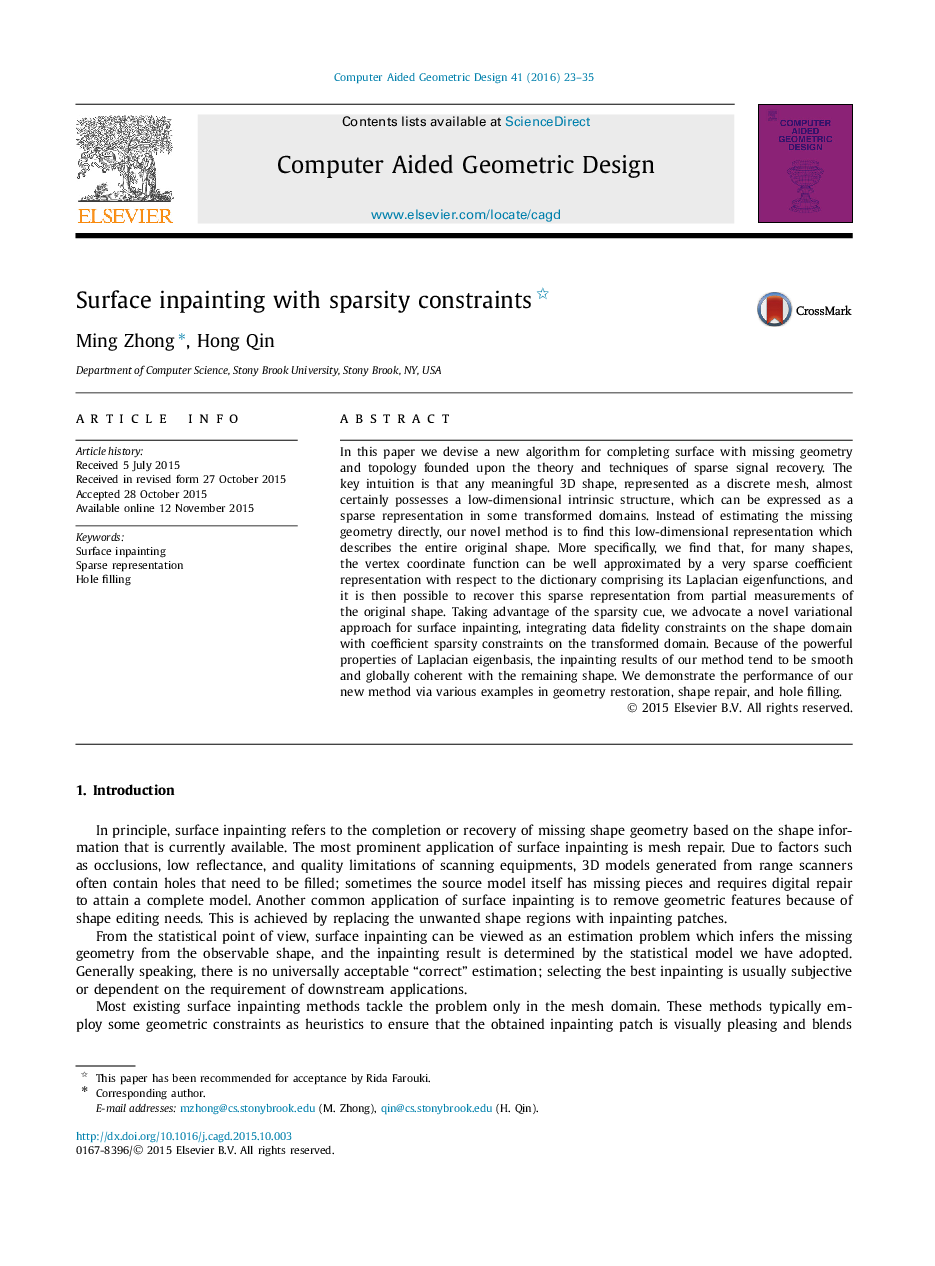| Article ID | Journal | Published Year | Pages | File Type |
|---|---|---|---|---|
| 441135 | Computer Aided Geometric Design | 2016 | 13 Pages |
•A surface inpainting framework based on representations in the transformed domain.•Sparsity as a prior to estimate reconstruction coefficients.•Laplacian eigenvectors are utilized for constructing reconstruction dictionary.
In this paper we devise a new algorithm for completing surface with missing geometry and topology founded upon the theory and techniques of sparse signal recovery. The key intuition is that any meaningful 3D shape, represented as a discrete mesh, almost certainly possesses a low-dimensional intrinsic structure, which can be expressed as a sparse representation in some transformed domains. Instead of estimating the missing geometry directly, our novel method is to find this low-dimensional representation which describes the entire original shape. More specifically, we find that, for many shapes, the vertex coordinate function can be well approximated by a very sparse coefficient representation with respect to the dictionary comprising its Laplacian eigenfunctions, and it is then possible to recover this sparse representation from partial measurements of the original shape. Taking advantage of the sparsity cue, we advocate a novel variational approach for surface inpainting, integrating data fidelity constraints on the shape domain with coefficient sparsity constraints on the transformed domain. Because of the powerful properties of Laplacian eigenbasis, the inpainting results of our method tend to be smooth and globally coherent with the remaining shape. We demonstrate the performance of our new method via various examples in geometry restoration, shape repair, and hole filling.
